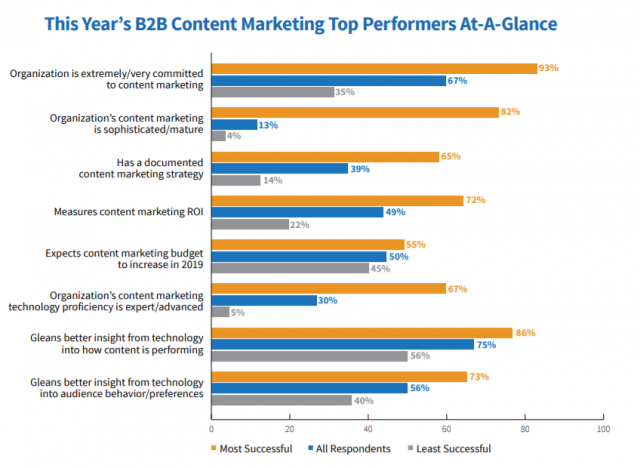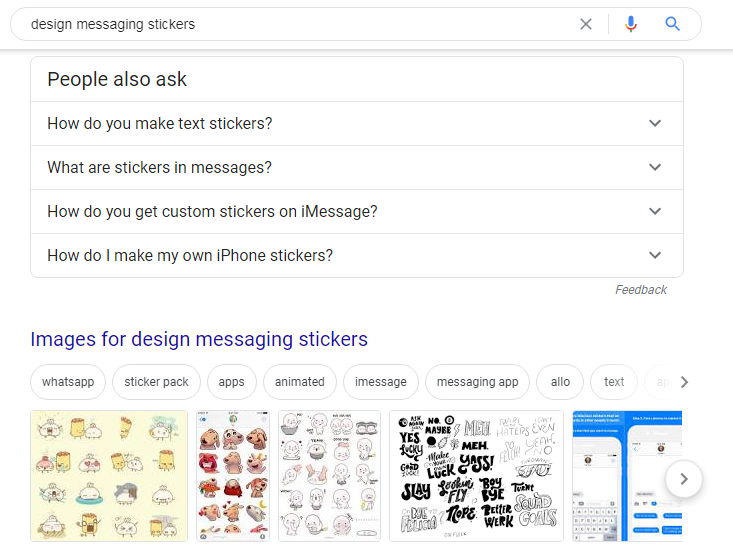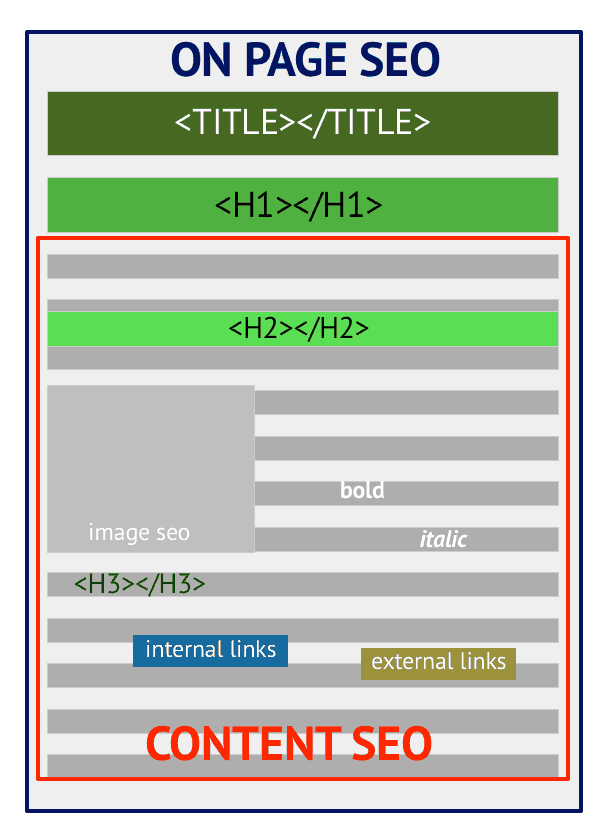We don’t need to tell you the competition between companies is fierce – you know that. But in the digital realm, you’re fighting for visibility, not just for customer dollars.
So if you don’t optimize your blog posts for SEO, another business will, and subsequently, gain the website traffic (and accompanying sales) that come from ranking on Google’s first page.
Your prospective customers turn to Google to answer their questions and solve their problems. Optimizing your blog posts ensures your target audience can find your business when they are looking up terms related to your core business offerings.
Optimizing your blog content may seem intimidating if you don’t have a marketing team dedicated to handling it. But there’s no need to worry. With this effective guide, you’ll learn how to create the foundations of an SEO-powered content strategy, boosting your blog’s ranking and brand’s visibility. We’ll also teach you the simplest ways to optimize your blog posts if you’re just getting started with SEO.
Let’s dive in.
Content Marketing and SEO – Why They Go Hand-in-Hand
Many business leaders understand the importance of content marketing. The field is growing as more and more businesses hire strategists, writers, and producers to fill out their marketing teams.
In fact, 93% of the most successful B2B marketers say they are very committed to content marketing – compared to the 35% of marketers who are the least successful. And yet, an important element has been overlooked.

(Graph from Content Marketing Institute and MarketingProfs)
It’s essential to combine content marketing and SEO to achieve optimal results. Why?
Google favors new, relevant content. By continually updating your content, Google will be more likely to index your content and rank it higher in SERPs (search engine results pages).
This is a core tenet of inbound marketing and why most B2B businesses have blogs.
But that’s not enough.
Blog posts need a strategic use of long-tail keywords and internal as well as external linking to be adequately optimized, driving consistent traffic to your website.
That’s the part that most brands miss. They are publishing but without a plan. A simple solution? At Shine Content Strategy, we advise our clients to pick topic themes to publish on regularly. Essentially, you can’t cover a topic once and expect to rank. Google needs to see you as an authority, which, if you’ve built a business around X topic or niche, you are, right?
So, use a topic cluster model to help to create a consistent publishing schedule, superior keyword-driven content, and healthy site interlinking.
4 Ways to Create an SEO Content Strategy that Boosts Your Blog’s Ranking
1. Understand Your Target Audience’s Pain Points
While putting together a content strategy, you must identify your target audience – even going so far as to sympathize with their pain points. The more you understand their problems, the easier it is for you to create content that offers solutions.
Use website analytics, customer surveys, social media monitoring, and keyword research to get into your customers’ minds and learn more about them. We always recommend interviewing your existing customers and asking their opinion about your products.
Super telling? How would they have solved the problem without your product or service?
Often businesses believe their customers would have gone to a competitor, but that’s not always the case. Many buyers, whether purchasing professionally or personally, will continue to “go around” the problem until they’re confronted with needing to make a change.
When/Why did they decide enough is enough? How can you attract more customers as they come to this same realization? This is why customer interviews and sales intake forms are so important.
Once you have gathered information about your target audience, take advantage of HubSpot’s nifty Make My Persona tool to craft buyer personas. Your team can use these personas in the future to develop content ideas that resonate with your target audience.
2. Gather Topic Ideas
Think about what your business can do for its customers. Answer these questions to get started:
- What topics can I discuss that will be relevant, unique, and impactful for my target audience?
- How can I solve my potential customers’ problems or answer their burning questions with my content?
- What topics am I an authority on in my industry?
Now, combine your answers to these questions with your audience insights to create various topic theme ideas that you know will excite your audience and show off your expertise. This is the start of your Pillar Content Keyword Strategy.
3. Perform Keyword Research
Search your topic themes with a quality keyword tool. These tools will help you generate 1000’s of blog topic ideas. Gather together a few of these long-tail keywords or questions for your blog outline.
What is the best tool for keyword research?
They all have their benefits – here are a few of our favorites. Most have limited, free versions.
- Frase
- Exploding Topics
- UberSuggest
- WordTracker
- Answer the Public
- SEMRush (the platform where we do nearly everything)
Lastly, don’t forget good ole Google Autocomplete (pictured below) and the “Searches Related to _____” section at the bottom of each query. Here, Google is showing you how both users and their search tools view the topic holistically.

Using keyword research to structure your post ensures that your blog article will have strong foundations in SEO from the start.
Rather than focusing on broad keywords, you’re better off selecting long-tail keywords. Typically these are less competitive and thus easier to get your blog ranking on Google.
Not to mention targeting these keyword phrases will provide you with more qualified traffic. For example, it would be difficult to rank for the keyword “video” and those searching this term wouldn’t be your most ideal customer segment when you want them to buy “video transcription services” from you.
Remember, 15% of searches have never been searched before, meaning they’re entirely unique. Often, these search queries are full sentences, so don’t feel shy about creating and targeting long-tail keyword phrases of three words or more.
Take your broad search term and personalize it to your business. A few long-tail keywords for “video” could be “guide to personalized video” or “how to create an interactive video strategy.” For our client, these ideas hit their “personalized video” and “interactive video” topic themes.
4. Write High-Quality Content
With your audience data, targeted topic ideas, and keywords ready to go, you’ll have no problem crafting high-quality content that speaks to your readers.
- Be sure your content answers your target audience’s questions, appeals to their interests, or helps solve their problems.
- To rank higher in SERPs, keep your content fresh and original.
- When your audience feels that your blog posts are interesting and provide relevant information, they will share them with their friends and Google will boost your blog’s ranking.
How Does Business Content Get on the First Page of Google?
First, let’s set appropriate expectations. Most content and SEO programs need a minimum of three months to rank highly. Our team has seen content rank for key business terms in as little as one month, but it’s not typical (and this type of high-quality content also usually takes at least 15 hours to produce).
SEO and content marketing are a long game, giving you consistent, qualified traffic long after other digital marketing methods that require a “push” like email, social, and PR. PPC is a quick band-aid to get traffic up quickly, but we’d always suggest you pair your PPC with SEO articles and avoid hiding it behind a landing page.
So, create content of enduring value, and most likely, your blog content should pick up traction in search engine results after around 4-6 months if it’s optimized correctly.
So, What Are The Best Methods to Optimize a Blog Post for SEO?
Use keywords that are relevant to your company’s content in the article/page title, headers (or headlines), meta descriptions, copy body, link text, image alt tags, and URL.
Optimize Your Title and Meta Description for More Click-Throughs
Your titles should include your keywords (even better if they are at the beginning of your title so they don’t get cut off by search engines). Each title needs to sound natural and accurately summarize the topic of your blog post. Remember, the more relevant your title is, the more views it will get – leading it to move up in the SERPs. By making sure your title is compelling, your post will get more clicks, which will also help SEO.
Write a short yet engaging meta description that uses your long-tail keywords to show search engines and readers what your blog is about and improve click-through rates.
Make a promise, and then deliver. This means the search user should know what to expect upon clicking through, and your business content should provide useful information that makes an impact.
Place Keywords in the Right Places throughout Your Blog

Your keywords should flow throughout the content and make sense in the context of what you are writing. Consistency is key here. If you’re writing an article on “interactive video strategy” this keyword phrase should be in all these places or semantically-related variations. That’s to say, you don’t need to sound like a robot, Google understands the relationship between related words and phrases. Varying language not only creates a great post but also demonstrates the quality of the resource to Google.
[Checklist]
Are your primary and secondary keywords in the following places on your blog?
Page Title? 🗇
Page URL? 🗇
Headers? 🗇
Copy/Article Text? 🗇
Images? 🗇
Links? 🗇
Related Content? 🗇
Our Favorite On-Page SEO Content Review Tools
Link Internally and Externally
It’s valuable to add internal and external links to create connected associations to help Google understand the data.
Why Internal Linking Is a Critical Blogging Practice
Internal links create a great site structure that is easier for Google to crawl and learn about the content and topic associations on your site. You want to avoid abandoned or “orphan pages” at all costs. Since site structure is often overlooked by content marketers, they’re one of the single best activities you can undertake to differentiate yourself from your competition and make sure you get your content ranking.
Our Favorite Linking Tools
- LinkWhisper: find other blogs on your site to link.
- Buzz Sumo: discover the most popular articles on social media.
- Link Miner: understand how many links you have on your blog pages and which are internal or external.
Why Linking to Authority Matters
External links act as a vote of confidence and tell Google which sites have the best resources on a particular topic. Evaluating pages critically and linking to those you think have the best information on the subject helps to lift your authority as well.
The best blogs are always well-researched, and it’s a good idea to provide your readers with helpful information by linking externally to trustworthy websites. Google’s search principals function a lot like academia, so always be sure to cite your sources.
Have a list of industry blogs you respect? Fantastic! Here’s a hack for searching your favorite sites for content you want to link to:

And don’t forget quotes! If we wanted to be more specific in the above query we could have typed product strategy as “product strategy” to make sure that results with those two words joined were the only ones returned in the SERP (search engine results page).
Interested in more inbound links? The surest way to generate more trust and authority in your industry is to create quality content. Still, there are brilliant ways to accelerate this process through PR and co-marketing efforts. Read some brilliant inbound link methods by Hubspot.
Add Images and Videos (and Optimize Them!)
Search engines and readers alike love multimedia. But search engines will have a hard time understanding what your images and videos are about if you don’t optimize them.
Images can be optimized by including image alt text, which describes to the search engine what is being depicted
Improve your video SEO by uploading caption files and video transcriptions or adding a related blog to the page. Again, these tell search engines what the content is. While Google’s image recognition capabilities are getting better and better, Google can’t watch our videos yet. It uses text (either provided or identified via natural language processing) to understand each clip.
Conclusion
Your content marketing and SEO need to go hand-in-hand to get the best results from your blog content and drive traffic to other parts of your website.
An SEO-powered content strategy ensures your team is spending their time and efforts on creating engaging content that gets seen by a motivated audience.
By optimizing your blog content and implementing these essential SEO content strategy tips, your blog posts will land on the front of SERPs and receive more views than ever before.
Need some extra help in building your content strategy? Check out our top template choices below:
Where to Find the Top Content Strategy Templates (2019)
- A Content Strategy Template You Can Build On (Moz)
- How to Develop a Content Strategy: A Start-to-Finish Guide (HubSpot)
- Content Strategy Templates and How to Use Them to Create A Successful Plan (Smartsheet)
- Content Marketing Toolkit: Tips, Templates, and Checklists (Content Marketing Institute)
- How to Write a Content Marketing Strategy (Buffer)
If you enjoyed this post, check out even more content marketing resources, like:
- Quick Start Guide: The 5 Types of Video that Will Lift Your Business
- Build a Killer B2B Video Marketing Strategy: Content Ideas & Best Practices
- Strengthen Your Content Strategy: How to Use Video to Retain B2B Customers
This post was originally published November 12th, 2019. It was updated May 21st, 2020 with additional information.










